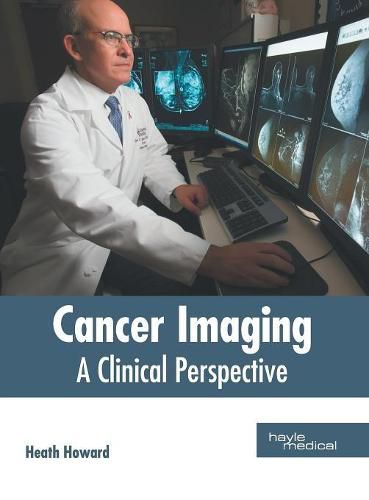Readings Newsletter
Become a Readings Member to make your shopping experience even easier.
Sign in or sign up for free!
You’re not far away from qualifying for FREE standard shipping within Australia
You’ve qualified for FREE standard shipping within Australia
The cart is loading…






This title is printed to order. This book may have been self-published. If so, we cannot guarantee the quality of the content. In the main most books will have gone through the editing process however some may not. We therefore suggest that you be aware of this before ordering this book. If in doubt check either the author or publisher’s details as we are unable to accept any returns unless they are faulty. Please contact us if you have any questions.
Most cancers are diagnosed either due to the appearance of signs and symptoms, or via screening. Some signs that are symptomatic of a cancer include a lump, unexplained weight loss, prolonged cough, abnormal bleeding, etc. Tissue from the area under suspicion is examined using x-rays, blood tests, endoscopy and contrast CT scans. Imaging techniques such as magnetic resonance imaging (MRI) and positron emission tomography (PET) are routinely used for diagnosis and detection of cancer. Immunohistochemistry and cytogenetics are some other kinds of tissue tests. Diagnosis of the tissue through a biopsy allows insight into the kind of proliferating cell, the associated genetic abnormalities, histological grade, etc. These tests allow information about molecular changes in fusion genes, chromosome number and mutations, thus enabling better assessment or prognosis and good treatment. This book is compiled in such a manner, that it will provide a clinical perspective of cancer imaging. It covers in detail some existing techniques and innovative practices concerning cancer imaging. As this field is emerging at a rapid pace, the elaborate content of this book will help the readers understand the modern concepts of the subject.
$9.00 standard shipping within Australia
FREE standard shipping within Australia for orders over $100.00
Express & International shipping calculated at checkout
This title is printed to order. This book may have been self-published. If so, we cannot guarantee the quality of the content. In the main most books will have gone through the editing process however some may not. We therefore suggest that you be aware of this before ordering this book. If in doubt check either the author or publisher’s details as we are unable to accept any returns unless they are faulty. Please contact us if you have any questions.
Most cancers are diagnosed either due to the appearance of signs and symptoms, or via screening. Some signs that are symptomatic of a cancer include a lump, unexplained weight loss, prolonged cough, abnormal bleeding, etc. Tissue from the area under suspicion is examined using x-rays, blood tests, endoscopy and contrast CT scans. Imaging techniques such as magnetic resonance imaging (MRI) and positron emission tomography (PET) are routinely used for diagnosis and detection of cancer. Immunohistochemistry and cytogenetics are some other kinds of tissue tests. Diagnosis of the tissue through a biopsy allows insight into the kind of proliferating cell, the associated genetic abnormalities, histological grade, etc. These tests allow information about molecular changes in fusion genes, chromosome number and mutations, thus enabling better assessment or prognosis and good treatment. This book is compiled in such a manner, that it will provide a clinical perspective of cancer imaging. It covers in detail some existing techniques and innovative practices concerning cancer imaging. As this field is emerging at a rapid pace, the elaborate content of this book will help the readers understand the modern concepts of the subject.